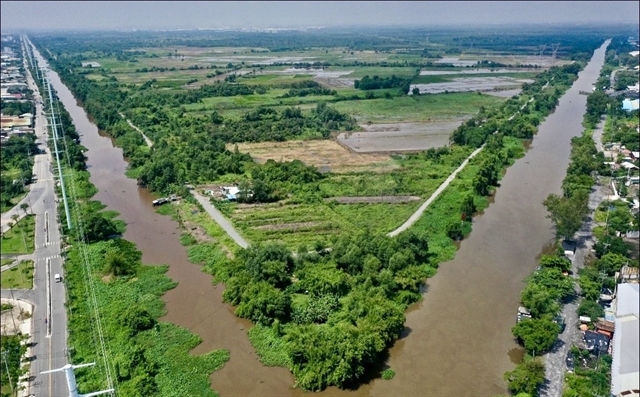 Society
Society

Việt Nam needs to have better solutions to integrate drowning prevention and control in climate change programmes, particularly interested in young children.

|
| Children participate in a swimming competition held in the northern province of Hà Nam in July last year. Swimming lessons are the most effective means to reduce children drownings. — VNA/VNS Photo Đại Nghĩa |
HÀ NỘI — Việt Nam needs to integrate drowning prevention and climate change management programmes, Đặng Hoa Nam, director of the Child Affairs Department under the Ministry of Labour, Invalids and Social Affairs (MoLISA) has said.
MoLISA statistics show that in the first five months of this year, 138 were reported to have drowned, however the actual number may be even higher.
Drowning is the leading cause of childhood deaths in Việt Nam. It is estimated that about 2,000 children still die from drowning each year.
The World Health Organisation (WHO) Representative to Việt Nam, Kidong Park, has said progress is being made although more needs to be done.
"This issue," he says "has not yet received adequate attention from the society".
Nam agrees, saying that in Việt Nam, community awareness around water safety is still limited. Many children have also not been provided with the knowledge or safety skills needed around water. Increasing people's knowledge and skills was the most important measure.
“When equipped with safety knowledge and skills around water, children become more aware of the dangers and know how to handle situations that can cause drowning,” he said.
Many parents have sent their children to swimming lessons in the summer. But, Nam said, the awareness of a lot of people is still behind where it needs to ensure water safety, in particular the need to supervise children around water.
Authorities at all levels should also directly conduct surveys of the local water hazards. They should set up a system of signs and barriers, and assign people to guard high-risk areas like pools and swimming holes.
“Knowledge and skills to prevent drowning are like ‘a vaccine’ that helps Việt Nam control and reduce drowning, including deaths from drowning, especially in children,” said Nam.
Nguyễn Thị Hà, Deputy Minister of Labour, Invalids and Social Affairs said that over the past few years, Việt Nam has built a legal framework system around childhood drowning prevention and control.
Many national programmes have also been issued to implement various measures to reduce drowning among children. Most recently, Prime Minister Phạm Minh Chính issued Decision No 1248/QĐ-TTg approving a programme on preventing childhood accidents and injuries in the 2021-30 period. The programme aims to reduce by 20 per cent the number of children dying from drowning, and have 70 per cent of children know water safety skills and 60 per cent of children know how to swim safely by 2030.
Nam said that it was necessary to raise awareness at all levels, in particular managers, and have reasonable investment and budget allocation for childhood injury prevention and control in general and children drowning in particular.
The Department of Child Affairs estimated the total cost for a child to be equipped with the minimum skills necessary to ensure safety in the water at about VNĐ700,000 (US$30).
This cost was not too much for the provincial budget, Nam said.
In addition, it is necessary to call for contributions from society to conduct universal swimming lessons, and popularise water safety skills.
During the pandemic children have been allowed to start their summer vacation early. Many parents think that when children are at home, they will be safe. However, if the living environment is not safe children are still prone to accidents, injuries and especially drowning - the most common cause of death in the summer.
Improving skills for children and their caregivers is one of the core issues that needs to be addressed to control and reduce drownings.
“Attention and supervision from parents, targeted and responsible actions from authorities and communities at all levels will create a strong impetus to eliminate children drowning,” said Hà. — VNS




